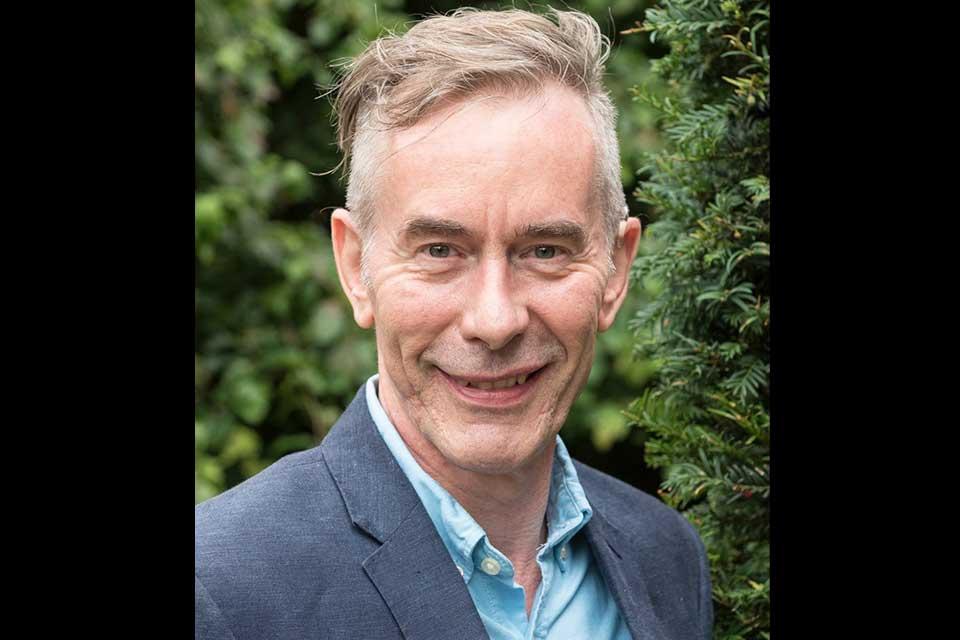It is with great shock and profound sadness that we share the sudden passing of Professor Ian Shipsey on Monday 7 October, a much-loved colleague, friend and Head of Department. Our thoughts are particularly with his wife, Professor Daniela Bortoletto, and family, and our sincere condolences go to his friends, colleagues and all who knew him.
Professor Ian Shipsey was a world-leading particle physicist who has led some of the most significant global scientific advances and collaborations in recent decades. His work centred on making and using instruments which enabled scientists to explore and help address the most fundamental mysteries of the universe.
It was Professor Shipsey’s creation of a specialist pixel camera which led to the discovery of the Higgs Boson at CERN in 2012. His work on particle physics at the Large Hadron Collider while based at CERN and at FERMILAB, Purdue, Syracuse and Cornell in the United States, and more recently at Oxford, made major contributions to big questions in physics, such as understanding why there is matter in the universe – to which we owe our existence – and how quantum instrumentation applies to fundamental physics.
In the USA, Professor Shipsey pioneered the Department of Energy’s involvement in the Vera C Rubin Observatory Legacy Survey of Space and Time (LSST) camera. This is the largest camera ever constructed for astronomy, it will make the first movie of the universe and make definitive measurements of the mysterious dark-energy that is pulling our universe apart. After returning to the UK, he served as a principal investigator for LSST at the Science and Technology Facilities Council.
Such contributions and pioneering work brought awards and international acclaim, including an Honorary Fellowship of the Institute of Physics and Fellowship of the Royal Society. Professor Shipsey held Fellowships of The American Physical Society, and the American Association for the Advancement of Science.
Professor Shipsey grew up in a working-class family in Walthamstow, East London, attending a local comprehensive school which didn’t have a trained A-level physics teacher. He was the first of his family and one of only five students in his year to attend university (Queen Mary, London), and took two gap years with a charity for the homeless before a PhD at Edinburgh, where he had his first introduction to particle physics.
During his PhD, Professor Shipsey moved to CERN, where he concentrated on an experiment seeking to understand why matter survived the Big Bang at the birth of the universe, when the laws of physics suggest it should have all been destroyed. At this time, he also met Daniela, an Italian particle physicist who became his wife. The pair moved to the US where Professor Shipsey worked on an experiment at Cornell University to understand why there are so many types of fundamental particle.
In his late 20s, while at Cornell, Professor Shipsey contracted a sudden and near-fatal illness. Swift treatment and support from the university’s medical school saved his life, but he lost all hearing. For many years he continued his work and helped to raise his young daughter while totally deaf. A cochlear implant finally restored some hearing, enabling him to hear his wife’s voice for the first time in 12 years, and his daughter’s voice for the very first time. He gave over 100 talks around the world to spread awareness of this life-changing technology.
Professor Shipsey was passionate about giving young people from all backgrounds a chance to transform their lives through science and apply the power of physics to the greatest challenges facing humanity – ranging from climate change and phasing out fossil fuels, to exploring space and improving health and healthcare across ageing populations.
He was instrumental in developing UK Research and Innovation’s Quantum Technologies for Fundamental Physics Programme (2018-2020); the UK’s Quantum Computing and Simulation Hub and its successor, the hub for Quantum Computing via Integrated and Interconnected Implementations (QCI3), are led from the Department of Physics at Oxford.
He was re-elected Head of Department for a second term at Oxford University Physics, one of the largest physics departments in the world and top-ranked in the UK and among the best globally across all key areas of physics. At Oxford, he championed and expanded public science initiatives and community and school engagement. These included citizen science projects such as Zooniverse and the launch of COMPOS, an initiative created by Oxford University Physics to give students from under-represented backgrounds at any UK secondary school access to top-level tutoring.
Alongside his leadership roles, Professor Shipsey continued his pioneering scientific research, most recently developing cameras for ATLAS at CERN’s Large Hadron Collider, and the MAGIS (US) and AION (UK) networked pathfinder atom interferometers searching for ultralight dark matter and gravitational waves.
He leaves a remarkable legacy.
Read more on the MPLS divisional website.
Read his obituary in the Guardian.
The Graduate Studentship Fund in Particle Physics has been set up in memory of Professor Ian Shipsey.

